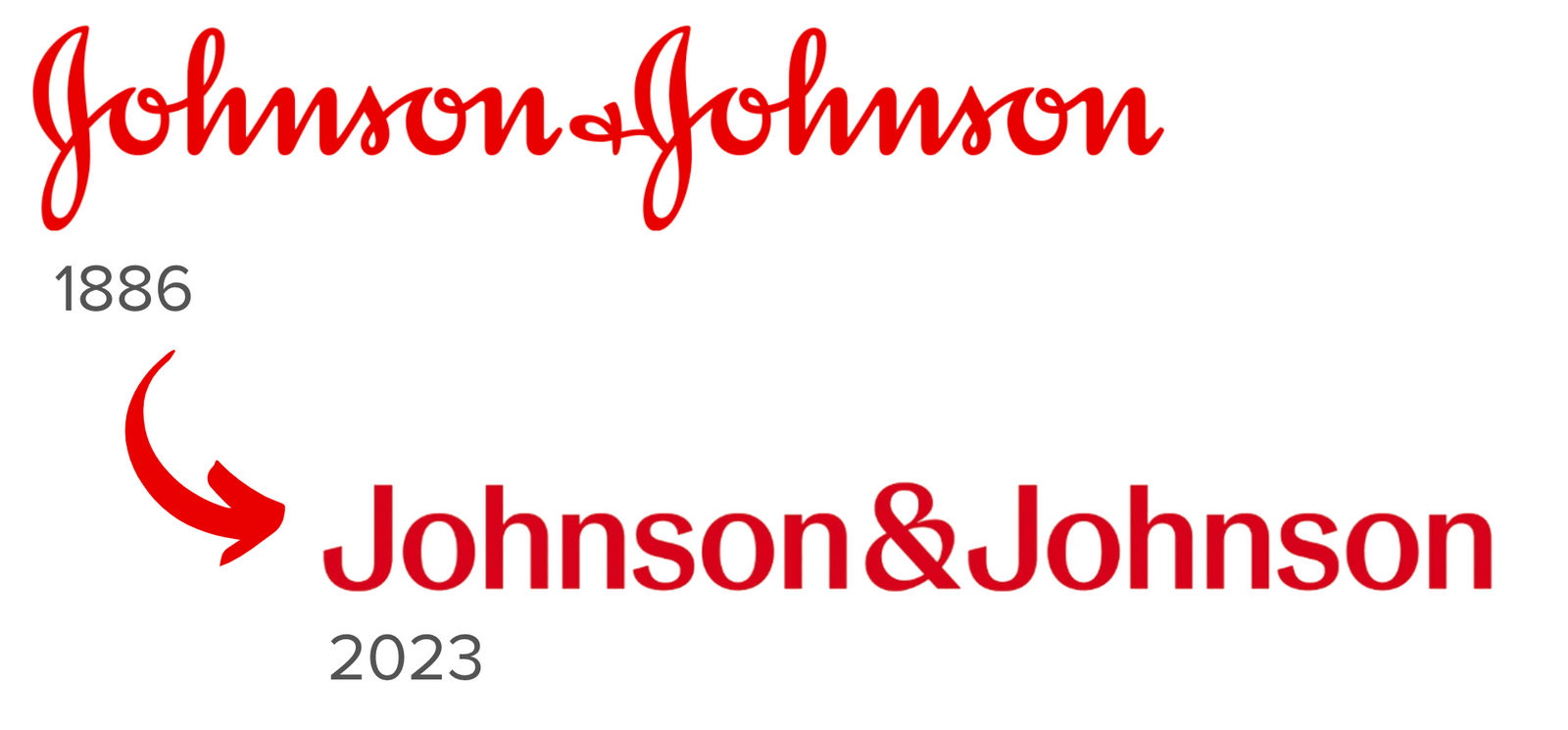The Race to the Bottom
The silent and relentless erosion of corporate soul.

In 1971, Carolyn Davidson was paid $35 USD to design the Nike logo. Her spark of inspiration came from the Greek goddess Nike, symbolizing speed and strength. That same swoosh logo is instantly recognizable today. This origin story drips with soul - one designer’s unique perspective on what a company - an organism of humans and machines trying to turn a profit - could represent, encapsulated in a single iconic mark.
When Paul Rand was designing the UPS logo over four decades ago, he showed it to his daughter who exclaimed “It looks like a present!” Rand, the legendary designer behind logos for IBM, Enron, Morningstar, Westinghouse, and more, knew he created another banger.

These logos came about in a time when human creativity and perspective were front and center. Technology hadn’t yet taken over and we still heavily relied on humans-in-the-box to get anything done.
Efficiency Kills Personality
In today's corporate landscape, the very essence of humanity is slipping through our fingers. Companies, in their relentless pursuit of productivity, have become prisoners of automation and cold, clinical systems. Yes, technology grants power and efficiency, but is also like Loki’s scepter, threatening to drain the soul from even the most vibrant organizations.
It’s easy to see the dehumanizing effect of technology creep into customer interactions. Chatbots and almost-human-sounding voice response phone trees handle basic requests, leaving customers bouncing between robotic responses in search of a human touchpoint.
I remember sitting on hold for over two hours with my health insurance company, trying to get information for a claim, nervously watching my battery drain and frantically pushing back meetings that I’ve already missed. I’m sorry, but after spending 25 minutes navigating through layers of AI agents, I can only hear “Your quality healthcare is important to us; please continue holding,” so many times before I lose my mind. I end up waiting in hold purgatory so long that I need to charge my new iPhone, but somehow can’t without the new USB-C to Lightning adapter Apple is selling for $35.
Internal corporate processes also tend to prioritize repeatability and risk aversion over humanity. The work environment transforms into a bland, uniform experience. Employees feel less like valued contributors and more like interchangeable cogs in a corporate machine. In my early career, I remember finishing up a major compliance project. After years of relentless effort, we finally went live. We eagerly awaited the monthly town hall, assuming our milestone would be the highlight, a validation of sleepless nights and last-minute pivots. Shockingly, the meeting went on as usual, focusing on standard KPIs and re-hashing the next “major initiative,” as if our groundbreaking success was just another unnoticed cog in the corporate machine.
This growing loss of human essence in corporate culture reverberates throughout history. In ancient Egypt, human labor was the day's technology, harnessed to create monumental achievements. The pyramids were not just tombs but a testament to a ruler's divinity and a nation's might. However, the massive human input came at a substantial cost - a grim life of hard labor under extreme conditions. The human element was not just part of the construction process; it was the process. Yet, it existed within a framework that devalued the individual in favor of the grand vision.
Today's corporate giants run inverted risks - relying too heavily on technology and processes while excluding human insight and soul. Systems enable astronomical productivity levels but remove the human element that brings color, spontaneity, and meaning. Check out the new Johnson & Johnson logo - spending millions to change from a 130+ year-old logo modeled after James Wood Johnson’s signature and using the same shade of red that medics wore.

“Our Johnson & Johnson brand identity communicates our bold approach to innovation in healthcare, while staying true to the care we have for our patients around the world” - J&J press release
As companies have scaled, the human element has been stripped away piece by piece. But there are ways to inject soul back into your organization before it becomes a lifeless husk floating through the corporate void.
Celebrate Together
How many milestones have come and gone without any acknowledgment? Just passed $100M in sales? Nothing. Company passed 1,000 employees? Silence. 10-year anniversary? Nope. We are letting the synergistic, win-win, low-hanging fruit rot on the ground.
The power of collective experience should never be underestimated; it's a catalyst for elevating human spirit and cohesiveness. Too often, the rush to meet deadlines and achieve key performance indicators reduces our interactions to mere transactions. But what if we dared to be different?
Make people feel proud to be part of something bigger. Our brains are already hardwired for this level of connection, why not tap into it and be a worthy venue for someone to pour their life energy into? You don’t need to work that hard to find an excuse to throw a party.
Spotlight Employee and Customer Stories
Profile employees and customers at every chance. Showcase Tanya in accounting's side hustle baking custom cakes. Interview loyal customer James about how your product changed his life. Ask Janet in sales what fires her up about what she does. Get to know the people behind the transactions and tap into what makes them human.
Publish these stories like propaganda. Help your teams fully understand that their work directly translates into helping other people in a meaningful way.
Make Human-Centric Bets
Structure decisions around human insights, not just data. Talk to real customers early and often. Prioritize solutions that make people smile. Empower employees to fix pain points they experience. Double down on moments of delight and connection.
Reclaiming Humanity
The org chart may show roles and metrics, but the humans bring real value. Employees, customers, and partners - all with their own passions, quirks, mission, values, and purpose. A company with soul celebrates this at every turn.
By re-centering our perspective - humans power companies - both customers and employees - organizations can nurture their soul instead of losing it. Exceptional brands blend scalable processes with human individuality and inspiration.
Remember - culture isn't about perks and snacks. It's the spark that ignites when people unite around a shared mission. So spotlight your team, start some wildfire, and race to the top.
How did you like this article?
Enjoyed this article? Subscribe to get weekly insights on AI, technology strategy, and leadership. Completely free.
Subscribe for Free